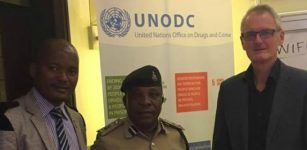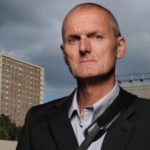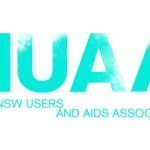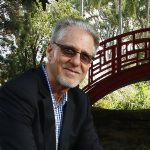Former Police Support Harm Reduction: An Interview with LEAHN’s Greg Denham

The 2017 National Drug Strategy was released last month. It provides a framework for preventing and reducing the harms associated with substance use. Since its first iteration in 1985, harm minimisation has formed the basis of Australia’s official policy.
Harm minimisation is an approach to drug use that acknowledges a portion of the community will use drugs, regardless of whether they’re legal, and applies methods that are designed to reduce the negative effects they can have.
This nation has been a leader in the field of harm minimisation. In the mid-eighties, needle and syringe programs were rolled out across the country, which has led to Australia having some of the world’s lowest rates of HIV amongst people who inject drugs.
In response to a heroin overdose epidemic in Kings Cross, the Uniting Medically Supervised Injecting Centre was set up in May 2001. The first of its kind in the English-speaking world, the facility reduced ambulance-calls outs in the local area by 80 percent.
Falling on deaf ears
These harm reduction strategies were introduced by the public via acts of civil disobedience, but once they were shown to work, politicians took note and enacted legislation that allowed these programs to be legally established.
However, over recent years, Australia has begun to lag behind others nations. Conservative politicians have been reluctant to champion controversial evidence-based programs for fear of losing votes.
Health professionals and the general public have been calling for pill testing services to be made available at music festivals since February last year. But, state governments have simply dismissed the proposals, and young people continue to die.
A zero tolerance approach
“The ongoing cooperation between the law enforcement and health sectors is a key success of the previous National Drug Strategy,” the document outlines.
Although, what’s happening on the ground is that police are taking a heavy-handed approach to drug use that increases the associated risks.
Harm reduction experts warn that police use of sniffer dogs at music festivals actually leads people to partake in dangerous drug taking practices. Cases of panic overdosing have occurred when people have taken all of their drugs at once on seeing a drug dog operation.
Police can take a different approach
The Law Enforcement and HIV Network (LEAHN) is an organisation that works to connect law enforcement agencies and the public health sector with the aim of preventing the spread of HIV. Former Victoria police senior sergeant Greg Denham is the coordinator of the network.
In August, he represented LEAHN at the South African Drug Policy Week, where he spoke about law enforcement taking an active role in reducing drug-related harms. And while he was in Africa, he ran a joint training program for police and civil society groups in South Africa and Tanzania.
Mr Denham is also the Australian representative of Law Enforcement Against Prohibition (LEAP): an international group of police officers that want to see an end to drug prohibition. Sydney Criminals Lawyers spoke to Denham about the need for the law enforcement approach to change.
Firstly, Greg, in your role as the coordinator of LEAHN you gave a speech at the South African Drug Policy Week. And in it you pointed out that police have two roles: policing and law enforcement. And the policing role has a health aspect to it.
Can you elaborate on how policing involves health?
Policing is a much broader role than just law enforcement. We need to be clear that police and policing in its essence is about working with communities to reduce harms. And some of that is about law enforcement.
I’ve been involved with looking at the broader context of policing in terms of the way in which they work with communities and create safer communities through supporting health, or working with health agencies to reduce risks and harms.
That includes the prevention and transmission of diseases such as HIV and hepatitis.
But it also includes working out safer ways to deal with people who have mental health problems or are homeless, and even working with governments, agencies and health departments around preventing the spread of bird flu and SARS.
It’s really looking at how police can work with communities to reduce health risks, particularly around HIV, which in many countries is driven by key populations: populations that are more at risk than others. These include people who inject drugs, sex workers and men who have sex with men.
That brings in the policing side of things. Those particular behaviours or activities are often illegal in countries, so we recognise that the police are going to be involved in dealing with those groups. And we also know that police can help stop the spread of HIV amongst and from those groups.
So my role is really working with law enforcement, government agencies and communities working out how police can best support programs to stop the spread of HIV amongst those key populations.
During your speech, you also outlined harm minimisation policies that police can and should apply, so as to reduce the spread of HIV within communities.
Can you outline what these methods are?
I recognise that police are under pressure in many places in the world to deal with the drug problem.
But, we also know that there are services that provide for example clean injecting equipment to people who inject drugs, through outreach work, or mobile facilities, or dispensing machines. Emphatically, it’s not a good idea, in fact, it’s counterproductive to target those programs.
We talk about how you can still fulfil your role in terms of being seen to be responding to drug problems, but not impacting on those services that prevent the spread of HIV and other blood-borne viruses. That’s just one example.
Another is increasing access to methadone, and not obstructing methadone access. For example, ensuring that if people who are using methadone come into police custody, or prison, they’re able to get methadone. And ensuring that people can access those programs without interference from police.
The other one is about condom use. Ensuring that police don’t harass or intimidate sex workers, or they don’t remove condoms, which is counteractive to preventing the spread of not only HIV, but other sexually transmitted infections.
We know that many clients of sex workers are married men, so if you start taking away condoms from sex workers, the chances of spreading HIV and other sexually transmitted infections is very high.
We suggest to police that they have a standard operating procedure that they don’t remove condoms.
Are police applying harm minimisation techniques in Australia?
We liked them to more.
We do have issues from time to time around needle and syringe programs for outreach workers. But, I would like to think that’s probably a minimum. There’s always going to be some tension or misunderstanding around law enforcement and needle and syringe programs.
I’d like to see law enforcement carry naloxone – Narcan – here. They do in some parts of the world. I’d also like to see needle and syringe programs in prisons here as well. That’s an important step forward. And I’d also like to see police support programs such as pill testing at music and dance festivals.
Those are harm reduction strategies that police could support. And we’re advocating for those because they do reduce harm.
There’s always more that police can do. But, we recognise that the law enforcement role is a difficult and challenging one.
There are some good examples of law enforcement working with health services in places like Denmark, the Netherlands and Switzerland. In places like that they’ve got harm reduction programs and police are very supportive.
We’d like to see those types of approaches here.
What are some of the more progressive harm minimisation policies that are being applied by law enforcement agencies around the world that you’ve aware of?
Well police are supportive of pill testing. And that’s something we’ve been advocating for. Enabling people to determine exactly what is in the drugs that they’re using at a dance festival.
Australia has one of the lowest purity rates of MDMA in ecstasy tablets. The rest is just a range of other substances. They can be quite harmful. And they shouldn’t be harmful. Pill testing can reduce those risks.
In the United States, police organisations are carrying naloxone, which is the opioid overdose reversing drug. That’s something we should be looking at here.
In the UK, when someone leaves custody, they ring the local needle and syringe program. And the needle and syringe programs service staff go to the police station and provide needle and syringes to people once they’re released.
Those types of programs are very beneficial and worthwhile within communities to reduce the risks of blood-borne viruses, overdoses and other drug harms. So that’s the sort of thing that we are advocating for.
When you were with Victoria police, you were involved with drug diversion programs. What do the programs like this involve? And how effective are they?
We still have the criminalisation of all drugs, so we haven’t gone down a decriminalisation path yet. Apart from South Australia with programs for cannabis use in terms of issuing civil penalties.
But, certainly drug diversion programs are effective. Police may arrest someone for a minor use and possession charge of an illicit substance. And instead of taking them to court, they divert them to assessment and treatment.
So if a person is found with a small amount of heroin or ice or cocaine, and they admit the offence, then police have this option to divert them through to health treatment.
It’s a much better option, not only for police – because it’s a quick process to deal with a person – but the person gets to talk to someone about their drug issues. That’s a better outcome for them and the community as well.
There’s another program now operating in the United States called LEAD: Law Enforcement Assisted Diversion. It’s similar to drug diversions programs in Australia, where people are diverted to a whole range of social welfare and health programs for sex work, drug use and homelessness also.
Early intervention and cautioning programs allow police to do their job, but it just gives them options on how they deal with that person and the outcomes are much different.
While you were in Africa you ran joint training programs for police and civil society groups, with a focus on developing relationships.
What did this program involve? And how was it received by both sides of the equation?
It was very well received. As you can imagine, there’s been ongoing tension between both police and drug user groups over a number of years. Police can be quite violent towards drug user groups. Drug users have experienced significant human rights abuses by police in many countries. That continues today.
The whole idea was to provide an opportunity for law enforcement and drug user organisations and health service providers. It was an opportunity to show both groups that they want the same outcomes – wanting a healthier, safer society.
It’s about generating discussion, about cooperation, engagement and relationship building. And providing a forum for open and honest discussion about how positive outcomes for both groups can be achieved.
It’s a long journey though. It’s something that will take a bit of time and ongoing engagement. But, there’s certainly a willingness on both sides to approach the problem differently.
Many police now see their actions in the past as significantly breaching human rights. It’s also the case that their actions have reinforced discrimination. And I think many police would like to change that.
Eventually laws may change and there was discussion about the need for law change. That’s something that many people in South Africa are willing to engage in. They’re interested in law change.
Many people pointed out that apartheid was legal there in the South African system, although, many people knew it was wrong. And eventually that law was changed.
The drug prohibition approach is the policy that we have now. The conversations were about how to change those laws. Laws and statutes and regulations can happen. And many people think they should happen.
You spoke about the need for law enforcement to work from a human rights framework. Whilst you were in Africa you engaged with members of drug user rights organisations, such as the INPUD (the International Network of People who Use Drugs), and TANPUD (the Tanzanian Network of People who Use Drugs).
Right now, Philippine president Rodrigo Duterte is waging a war on drugs against citizens of his country. Since June 30 last year, around 7,000 people have been killed for their alleged involvement with drugs.
What would you say the situation currently is regarding the rights of people who use drugs around the world under the state of prohibition? And how does this situation need to be improved?
Well obviously, if you’ve got 7,000 people being almost legally murdered in the Philippines that situation does need to change. And it needs to be brought to the International Criminal Court.
The approach the government is taking there in promoting the slaughter of people who use drugs needs to be held to account.
We have a situation in the Philippines now where the president is basically giving the right to police and other groups to kill people. And there’s no recourse to it. Not only is there no justification, there’s no investigation. Their actions are not being scrutinised.
We saw the other night that there was another significant raid by police, where a number of people were killed. And a consistent pattern across the statements made by police are that they were shooting in self-defence.
I am of the opinion that this is purely political opportunism to scapegoat and carry out a campaign against people who are least able to defend themselves and to speak up, because the consequences are going to be horrific.
What’s happening in the Philippines is appalling. Internationally, there should be something done to hold this government to account.
And looking at the people who use drugs in African countries in comparison with Australian drug users are the human rights issues being faced by these groups completely different, or do they have similarities?
There are similarities. And it depends on the circumstances.
The law enforcement approach here is different. They are more considerate of human rights. They do tend to take a bit more of a considered approached. And there has been a bit of a shift of focus in terms of dealing with people who use drugs.
The situation in Africa and other places is somewhat different. And there’s a lot of difference in terms of the policing approaches. In some countries in Africa, there is a significant amount of corruption amongst law enforcement. What we describe as corruption, I think they would describe as accepted practice.
Certainly, in my experiences of working in Africa and other parts of the world the way in which people who use drugs are treated is often based around whether or not they can actually pay police. They get arrested if they can’t pay the police. Then they get drug tested. If they get a positive drug test, they are then put into rehabilitation programs, which really are de facto prisons.
They don’t have any recourse to the legal system. It’s a system which basically enables the people that run the system to exploit and extort money out of people. And it’s very violent.
They’re the sorts of things that we need to be addressing in many countries. And also, address the underlying drivers around problematic drug use, which include things like poverty, lack of resources, lack of education and housing. In many developing countries, a lot of these need to be addressed and it’s a big task.
And lastly, you’re the Australian representative of LEAP: a group calling for an end to drug prohibition. The war on drugs is increasingly being called out as a failure. And yet government policies in countries like Australia require law enforcement to continue its heavy-handed approach to drugs.
In your opinion, what’s the way forward? And are we actually seeing any progress in that direction?
There’s a lot of conversation about this, but there’s little action. We don’t seem to be progressing in terms of drug policy reform.
We need to expand programs such as injecting facilities. And to provided needle and syringe programs in prisons. We also need to revisit heroin-assisted treatment.
We talk a lot about the need for drug law and policy reforms. But, we’re not getting any progression in terms of policies. All we seem to get is the continued reference for the need for greater action by police. We seem to get more laws, greater penalties and greater police powers.
We’ve got a situation in Victoria where the government is contemplating new laws to give police powers to search people without reasonable grounds. And that situation reinforces the notion that governments are prepared to do anything in the name of the war on drugs.
That’s the sort of policy approach that we’re getting, whereas on the other side you get talk about drug policy reform, but we get no action. We certainly need to get things put into action as far as drug policies are concerned.
Personally, I’d like to see drugs decriminalised. And once they’ve been decriminalised, then all drugs regulated and controlled in terms of their availability.
Greg thanks very much for taking the time out to have this chat with us today.
Thank you.







